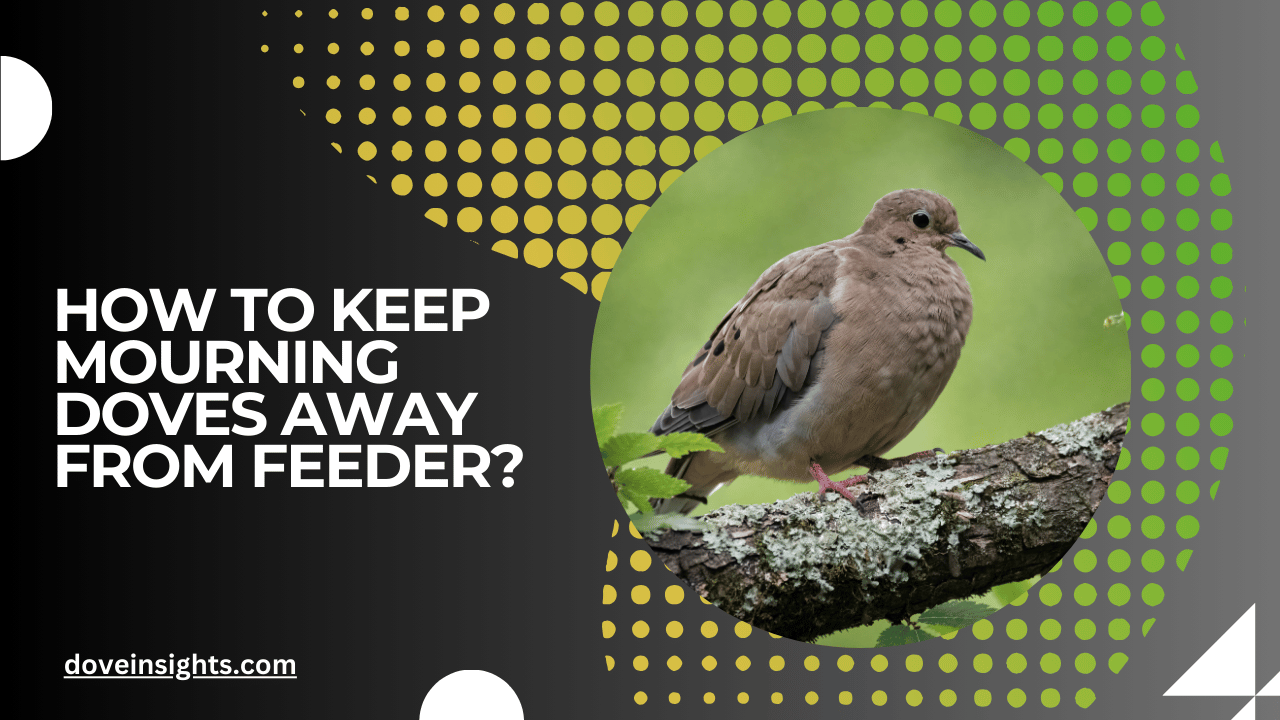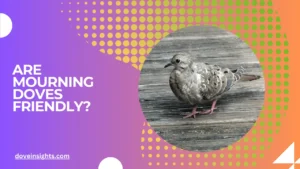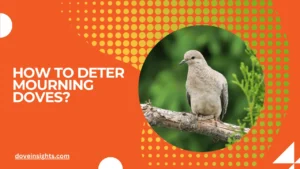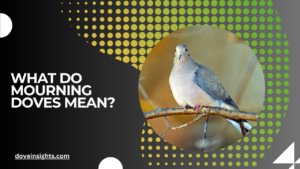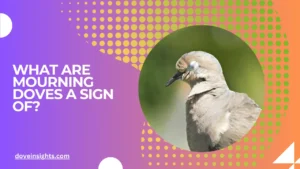Mourning doves are often viewed as symbols of peace and tranquility, with their gentle coos and graceful presence.
But when it comes to bird feeders, these seemingly harmless birds can quickly become a nuisance. Their habit of dominating feeders can drive away smaller, more desirable birds, leaving bird enthusiasts frustrated and looking for solutions.
If you’ve been wondering how to enjoy birdwatching without mourning doves taking over your feeders, you’re not alone.
Understanding how to manage mourning doves in a way that’s both humane and effective is essential for anyone who wants to maintain a balanced bird-feeding environment.
This guide will explore practical strategies to discourage mourning doves, while still keeping your yard inviting for other bird species. By the end of this article, you’ll have actionable tips to reclaim your feeder for the birds you love.
Contents
- 1 Why Mourning Doves Dominate Feeders
- 2 The Best Feeders to Deter Mourning Doves
- 3 Adjusting Your Seed Choices
- 4 Habitat Modifications to Discourage Mourning Doves
- 5 Humane Ways to Deter Mourning Doves
- 6 Conclusion
- 7 FAQ’s
- 7.0.1 Why are mourning doves attracted to my feeder?
- 7.0.2 What seeds should I avoid to deter mourning doves?
- 7.0.3 Can I keep mourning doves away without harming them?
- 7.0.4 Do caged feeders really work against mourning doves?
- 7.0.5 Will nyjer seed help reduce mourning dove visits?
- 7.0.6 How can I keep the area under my feeder clean?
Why Mourning Doves Dominate Feeders
Mourning doves are not aggressive, but their sheer size and feeding habits can create challenges for backyard birdwatchers. Their love for easy-access feeders and ability to eat large amounts of seed quickly can crowd out smaller birds.
- Mourning doves prefer open spaces and flat surfaces, making common tray and hopper feeders ideal for them.
- Their larger size often intimidates smaller birds, leading to reduced diversity at your feeder.
- They are opportunistic eaters, which means they’ll eat almost anything, leaving little for other species.
Understanding their behavior is the first step in crafting a strategy to manage them effectively.
The Best Feeders to Deter Mourning Doves
The type of feeder you choose can make all the difference. Certain designs naturally discourage larger birds like mourning doves, giving smaller species a fair chance.
- Tube Feeders: These have small perches and narrow feeding ports, making it difficult for doves to access the seeds.
- Caged Feeders: Surrounding the feeder with a metal cage allows smaller birds to enter while keeping larger ones out.
- Weight-Sensitive Feeders: These close the seed ports when heavier birds, such as mourning doves, land on them.
Switching to one of these options can drastically reduce mourning dove activity at your feeders.
Adjusting Your Seed Choices
The food you put out plays a significant role in attracting—or deterring—mourning doves. By offering specific seeds that mourning doves dislike, you can naturally limit their presence.
- Mourning doves love sunflower seeds, cracked corn, and millet. Avoid these if you want to discourage them.
- Opt for nyjer (thistle) seeds, which appeal to finches but not to mourning doves.
- Safflower seeds are another excellent choice, as they are less palatable to larger birds like doves.
Changing your seed selection is an easy and effective way to attract your desired bird species.
Habitat Modifications to Discourage Mourning Doves
Your yard’s layout and features can either encourage or discourage mourning doves. By making simple adjustments, you can make your outdoor space less appealing to them.
- Eliminate ground food: Mourning doves are ground feeders, so keeping the area under your feeder clean is critical.
- Reduce open spaces: Plant shrubs or use landscaping to create barriers that mourning doves avoid.
- Use feeder placement strategically: Hang feeders in areas with less visibility or close to trees where smaller birds feel safer.
These habitat tweaks ensure mourning doves don’t feel as comfortable lingering in your yard.
Humane Ways to Deter Mourning Doves
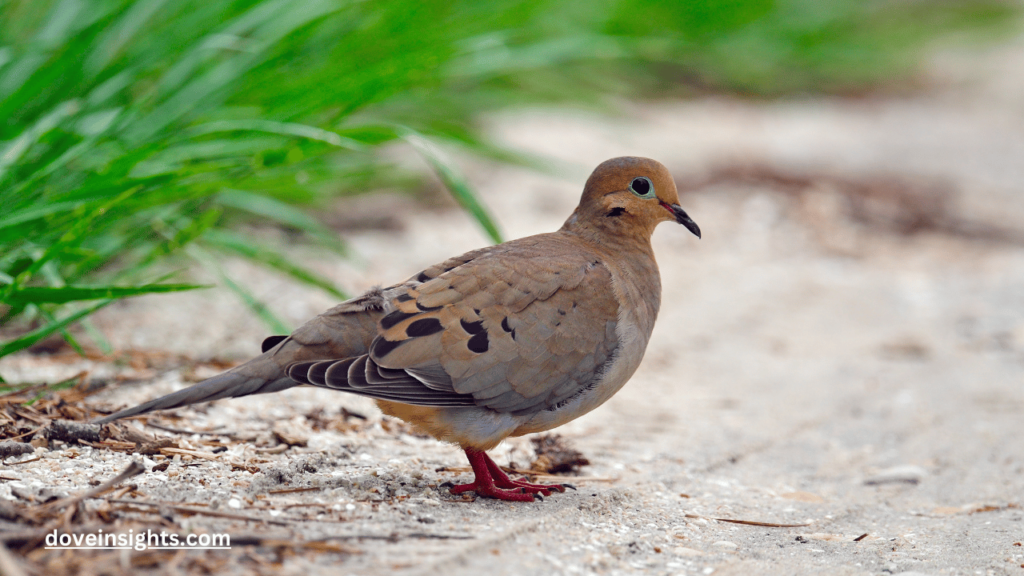
Discouraging mourning doves doesn’t mean harming them. There are humane solutions that respect their role in the ecosystem while protecting your feeders.
- Scare tactics: Use reflective objects or noise-makers to deter them without causing harm.
- Decoy predators: Place fake owls or hawks near feeders to discourage doves from approaching.
- Limit feeding times: Offer food in smaller amounts and at specific times, reducing the likelihood of doves dominating the space.
These methods ensure a peaceful coexistence with mourning doves while allowing smaller birds to thrive.
Conclusion
Balancing the dynamics of a backyard bird-feeding station requires patience and strategy. Mourning doves, while beautiful and peaceful, can unintentionally monopolize feeders, leaving less room for diversity.
By understanding their behavior and implementing the tips shared in this guide, you can create an inviting environment for a variety of bird species.
Whether it’s choosing the right feeder, adjusting seed choices, or making habitat changes, these simple steps can help you enjoy birdwatching without frustration.
With these solutions, you can ensure that your feeder becomes a haven for the birds you love, rather than a battleground dominated by mourning doves.
FAQ’s
Why are mourning doves attracted to my feeder?
Mourning doves are drawn to feeders with easy access, especially those with flat surfaces or large amounts of seed like sunflower and millet.
What seeds should I avoid to deter mourning doves?
Avoid offering sunflower seeds, cracked corn, and millet, as these are favorites of mourning doves.
Can I keep mourning doves away without harming them?
Yes, humane methods like using specialized feeders, changing seed types, and placing reflective objects can effectively deter them.
Do caged feeders really work against mourning doves?
Yes, caged feeders are designed to allow access to smaller birds while keeping larger birds like mourning doves out
Will nyjer seed help reduce mourning dove visits?
Absolutely. Mourning doves generally dislike nyjer seed, making it a great choice for attracting finches instead.
How can I keep the area under my feeder clean?
Use a seed catcher or place a tray beneath the feeder to collect fallen seeds and prevent ground feeding.

